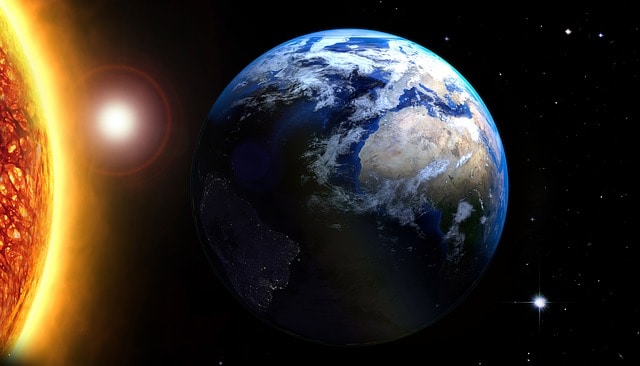On Sunday, January 5, the perihelion will occur, the moment in which the Earth and the Sun are at a shorter distance: “only” 147,091,144 kilometers
We know that the Earth revolves around the Sun: it does so at an average speed of 107,280 kilometers per hour, which means it takes 365 days and six hours to complete an elliptical orbit of about 930 million kilometers. However, it does not travel at a constant speed but accelerates and brakes depending on where you are.
The so-called Kepler’s laws, dictated by the mathematician Johannes Kepler, describe the movement of the planets. And the second of those laws is the one that speaks of the speed of translation: when the Earth is closer to the Sun, its speed increases; while when it reaches the furthest point from the astro star, its speed decreases.
That moment in which the Earth and the Sun are in their closest position throughout the year will take place this weekend. It is known as perihelion and means that the speed of the Earth will increase to 110,700 kilometers per hour, more than two per cent higher than usual; on the contrary, the moment in which that speed diminishes to the maximum is the aphelion.
Sunday morning
The time when the Earth will reach its maximum speed will be Sunday, January 5 at 07:48 UTC. In United States time zones, that’s January 5 at 2:48 a.m. Eastern Time, 1:48 a.m. Central Time, 12:48 a.m. Mountain Time – and January 4, at 11:48 p.m. Pacific Time, 10:48 p.m. Alaskan Time and 9:48 p.m. Hawaiian Time. At that time, our planet will be “only” 147.091.144 kilometers from the Sun, a distance to take into account since in July we will have separated more than 152 million kilometers from the star king.
That day, that of aphelion will be July 4 and will coincide with the moment when the Earth travels at a slower speed throughout the year: “barely” at 103,536 kilometers per hour. However, this difference in speed is so minimal that in no case can it be detected by humans, that we will continue to live on our planet like any other day.
The only thing that changes is that the six hours more than it takes each year for Earth to complete its orbit means that one day must be added to the calendar every four years. It’s leap years and 2020 is precisely one of those years. Therefore, the month of February will have 29 days instead of the usual 28 of each year.
